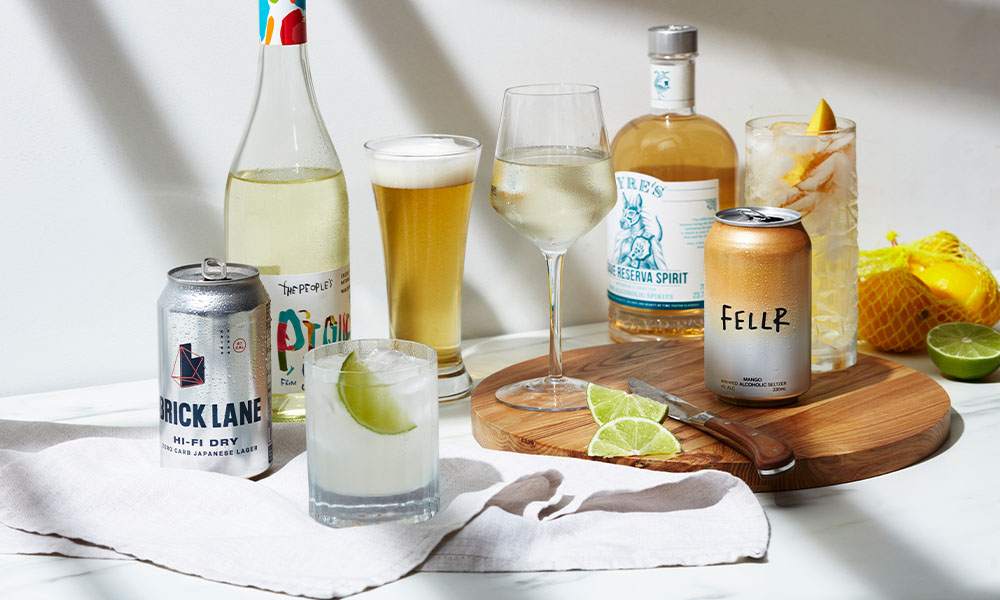- The Drop
The Only Guide to Wine Glasses You’ll Ever Need
Read Time 3 Minutes
Posted 12 Aug 2022
By Vintage Cellars
Wine glasses as we know them are believed to have emerged in medieval Venice, the centre of the glass blowing world. They’ve evolved quite a bit since then, with innovations leading to new types of wine glasses specifically designed to unlock a wine’s flavours and aromas. With so many sophisticated and sought-after wines now available, selecting the right wine glass is an essential aspect of wine appreciation.


Glassware 101
A wine glass has three parts: bowl, stem and base. As Mark Baulderstone, Managing Director at Riedel Australia & New Zealand explains, “While the bowl is critical when it comes to delivering the wine’s flavour, the height of the stem and the size of the base are equally important when it comes to the balance.”
But what about stemless glasses? While stemless wine glasses are increasingly popular, and great for casual gatherings and everyday use, if you are sipping a high quality wine, you should choose a classic stemmed wine glass to prevent the warmth of your hand from affecting the flavour of the wine.
To really take your wine-drinking experience up a notch, bring out the crystal wine glasses. “High-quality crystal glassware provides extra clarity in the glass; it doesn’t distract from the colour of the wine,” explains Ted Rutledge, Senior Sommelier at Aria Restaurant in Sydney.

What are the best white wine glasses?
A white wine glass is narrower with a taller bowl which keeps the wine cool, releases delicate aromas and reveals the buttery, oaky or citrus flavour. Lighter-bodied aromatic white wine such as sauvignon blanc or semillon calls for a smaller bowl, which concentrates and amplifies the floral aromatics.
For a medium white, such as fiano or pinot grigio, or full-bodied white such as chardonnay or vermentino, select a wine glass with a larger bowl to fully reveal the creamy texture.

Different types of red wine glasses
Reds need space to breathe, so red wine glasses have a fuller and rounder bowl with a wide opening. The result? Contact with oxygen enhances aromas from the complex bouquets, softens tannins and grants more vivid flavour (as evident with the Yering Station Little Yering Pinot Noir).
Generally, there are two red wine glass shapes – Burgundy and Bordeaux. Burgundy wine glasses are shorter than the Bordeaux type, but have a bigger bowl that tapers to a narrower opening, delivering the wine to the tip of the tongue where the delicate flavours can be savoured – perfect for delicate reds such as pinot noir and medium-bodied Australian shiraz (such as the Leeuwin Estate Art Series Shiraz).
Bordeaux glasses are taller with an open bowl allowing the wine to interact with air, important for fuller-bodied reds like cabernet sauvignon, and New World wines such as malbec and tempranillo.
“The Bordeaux glass is quite important for those full-bodied wines which are a little higher in alcohol. The bowl gives the wine room to breathe,” says Ted.
Pro tip: Gently swirl the glass before sipping – this will make for a more luxurious drinking experience.



Flutes, coupes or white wine glasses for sparkling wine?
The conventional wisdom is to use flutes, as a narrower bowl and longer stem prevents fast evaporation of the tingling bubbles. However, Ted begs to differ. “I steer clear of flute glasses, they afford no chance to develop the aromatics.” He suggests a Burgundy wine glass or aromatic white wine glass instead.
Riedel’s Mark Baulderstone agrees: “Generally, an egg- shaped wine glass allows the complexity and beautiful aromas of the Champagne to express themselves best.” Try this type of glass with the Croser Vintage Sparkling or Marcel Pierre Champagne Brut NV.
Whatever your favourite type of wine, beautiful wine glasses set an expectation of the upcoming wine drinking experience, so it’s worth investing in a high-quality wine glass set.
- The Drop
- View More Posts The Drop










